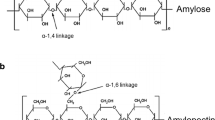Abstract
In India cerealgrain sector reflects increasing demand with increasingly affluent population.Wheat, jowar (sorghum), and corn (maize) are commonly consumed cereal grains in Indian subcontinent and hence produced abundantly. These cereals are consumed in the form of flour (Atta) obtained fromeither in domestic or commercial mills, which have increasingglobal market demand. The particle size distribution of cerealgrain flour decides the quality of final product. Thus study of particle size distribution of flour obtainedduring milling is one of the essential parameter for the large scale production. In the present research work grinding of wheat, jowar (sorghum) and corn(maize) using flour mills (Buhrstone mill) and their particle size distribution using suitable mathematical models (Gaudin-Schuhmann and Rosin–Rammler-Bennett) have been studied. Further the best fit model equation is utilized to determine the inventory required for the large scale production of cereal flour. Upon applying different models it was found that GS model fits well to cereal grain flour making which is evident from high coefficient of determination of 0.9221. The model can be used to compute inventory requirement for production of flour of desired size of required cereal grain. For example to produce 1 ton of 1362 µm size of wheat flour one needs 1.4 ton of raw material.


Similar content being viewed by others
References
Allais I, Edoura-Gaena R, Gros J, andTrystram, G. (2006) Influence of egg type, pressure and mode of incorporation on density and bubble distribution of a lady finger batter. J Feed Eng 74:198–210
Austin LG, Klimpel RR (1964) The theory of grinding operations. Ind Eng Chem Res 56:18–29
Canadian Fertilizer Institute (1982) The CFI Guide of material selection for the production of quality blends. CFL, Ottawa, Ontario, Canada
Craig RF (2004) Craig’s soil mechanics. Spon Press, London
Folk RL, Ward WC (1957) Brazos River bar: a study in the significance of grain size parameters. J Sediment Res 27:1
Harris CC (1968) The application of size distribution equations to multi-event comminution processes. Trans AIME 241:343–358
Hinds WC (1992) Properties behaviors and measurement of airborne particles. Aerosol Technology-john Wiley and Sons, New York
Macıas-Garcıa A, Cuerda-Correa EM, Dıaz-Dıez MA (2004) Application of the Rosin-Rammler and Gates-Gaudin-Schuhmann models to the particle size distribution analysis of agglomerated cork. Mater Charact 52:159–164
Murthy TPK, Manohar B (2013) Grinding studies of mango ginger: mathematical modeling of particle size distribution and energy consumption. Am J Food Sci Tech 1:70–76
Schumann R (1982) Size distribution and surface calculations, Technical publication no. 1187, American Institute of Mining and Metallurgical Engineering, New York.
Shashidhar MG, Murthy TK, Girish KG, Manohar B (2013) Grinding of coriander seeds: modeling of particle size distribution and energy studies. Part Sci Technol 31:449–457
Sushant S, Archana K (2013) Methods of size reduction and factor affecting size reduction in pharmaceutics. Int Res J Pharm 4:8
Tajane S, Dadhe P, Mehetre S, Mandavgane S (2017) Material and energy balance calculations for commercial production of whole neem fruit powder using particle-sizedistribution and energy models. Curr Sci 113:5
www.world-grain.com/Departments/Country-Focus/Country-Focus.../India-2017.aspx
Author information
Authors and Affiliations
Corresponding author
Additional information
Publisher's Note
Springer Nature remains neutral with regard to jurisdictional claims in published maps and institutional affiliations.
Rights and permissions
About this article
Cite this article
Tajane, S., Shastri, P. & Mandavgane, S. Inventory calculation for commercial production of cereal grain flour using particle size distribution model. J Food Sci Technol 59, 2666–2673 (2022). https://doi.org/10.1007/s13197-021-05286-z
Revised:
Accepted:
Published:
Issue Date:
DOI: https://doi.org/10.1007/s13197-021-05286-z




